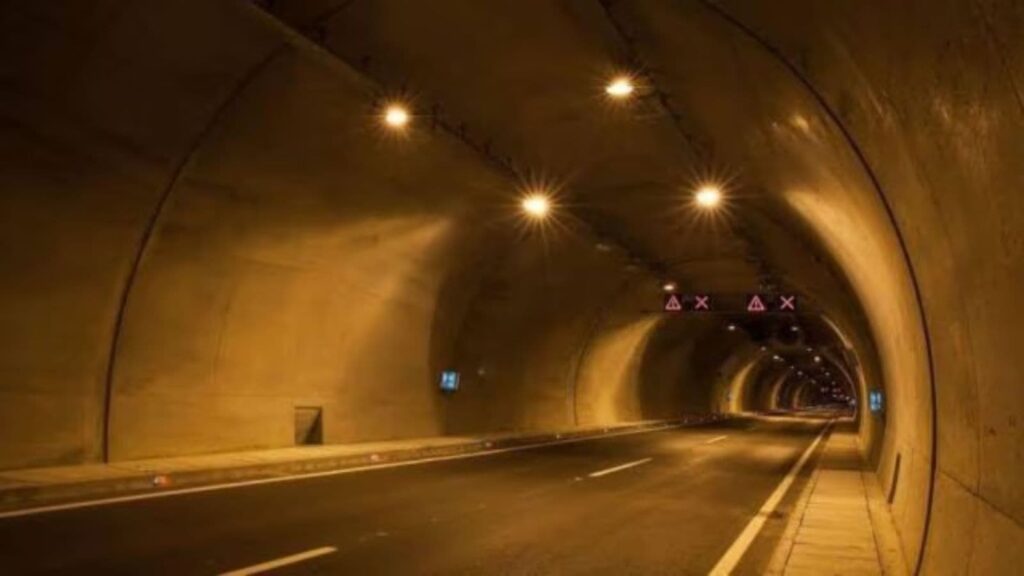The Detailed Project Report (DPR) for Bengaluru’s ambitious Hebbal–Silk Board underground tunnel has indicated that fewer vehicles are expected to use the corridor in a no-toll scenario than in one where tolls are levied, both towards the city and the airport, suggesting more traffic congestion with tolls.
This anomaly, revealed through a review of the traffic projections for the proposed 16.75 km tunnel, has raised eyebrows about the integrity of the demand modelling used to justify the project’s viability. Karnataka Deputy Chief Minister D K Shivakumar had earlier emphasised that “without toll, the tunnel road project will not work.”
The numbers defy logic, say mobility experts, who argue that tolling infrastructure generally reduces traffic volumes, as price-sensitive daily commuters, especially those heading into the city, tend to avoid toll roads.
Number of projected cars
According to the final DPR prepared by Rodic Consultants for the Bruhat Bengaluru Mahanagara Palike (BBMP), the number of vehicles (measured in Passenger Car Units or PCUs) projected during the morning peak hour in 2031 is 34,796 in a no-toll scenario. However, if toll is charged, the number drops to 33,057 PCUs (Scenario 2), and even further to 32,304 PCUs in Scenario 3 (alternative alignment with toll).
DPR forecasts higher or similar volumes in toll scenarios, especially airport-bound trips in 2041, where Scenario 2 surprisingly shows more traffic than the no-toll scenario.
In the morning peak hour projections for 2031, DPR estimates that 19,932 PCUs will travel towards the city and 14,864 PCUs towards the airport in a no-toll scenario, adding to 34,796 PCUs. However, in the toll-based Scenario 2, these numbers drop to 18,731 PCUs towards the city and 14,326 towards the airport at 33,057 PCUs.
Scenario 3, another toll-aligned option, shows an even lower 18,405 PCUs city-bound and 13,899 PCUs towards the airport, totalling 32,304 PCUs.
Story continues below this ad
The pattern remains similar in 2041, with the no-toll scenario projecting 26,215 PCUs towards the city and 19,489 towards the airport (at 45,704 PCUs), compared to Scenario 2’s 24,949 city-bound and 19,994 airport-bound PCUs (total: 44,943), and Scenario 3’s 24,809 city-bound and 19,664 airport-bound PCUs (total: 44,473).
DPR also proposes a toll of Rs 330 (one-way) for a distance of 16 km. The report also highlights that tolls for subsequent years are calculated based on a 5 per cent annual increase in the wholesale price index, with a 40 per cent restriction.
Additionally, DPR also warns of at least 22 gridlock situations at entry and exit ramps if ramp capacities are not adequately designed or if traffic management is not strengthened. Some of the potential gridlock locations include the Chalukya Circle, Race Course Road junction, Minerva Circle, Cauvery Junction, Lalbagh West Gate, and other areas. The report recommends the need for additional slip lanes and turning lanes, signal optimisation and real-time monitoring systems.
‘DPR is flawed and unreliable’
Satya Arikutharam, an urban mobility expert, said, “BBMP’s Tunnel Road proposal upends economic theory. Its traffic analysis outputs suggest that more cars will use the Tunnel Road facility when tolled. The entire transport modelling work is flawed, and the all-important modal share is just arbitrarily lifted from the old Comprehensive Mobility Plan (CMP). The DPR is flawed and unreliable, and I do not expect any credible bids for the tender.”
Story continues below this ad
Rajkumar Dugar, convenor, Citizens4Citizens forum, said, “The tunnel road project is likely to do the exact opposite of what it promises. Any minor gain from commuting at an average speed of 50 kmph inside the tunnel will be almost entirely wiped out at the entry and exit points. Worse, it will create traffic chaos for those who aren’t even using the tunnel. If the goal is truly to free up the roads, what’s needed is a serious push for public transport — buses, metro, suburban rail and more.”


